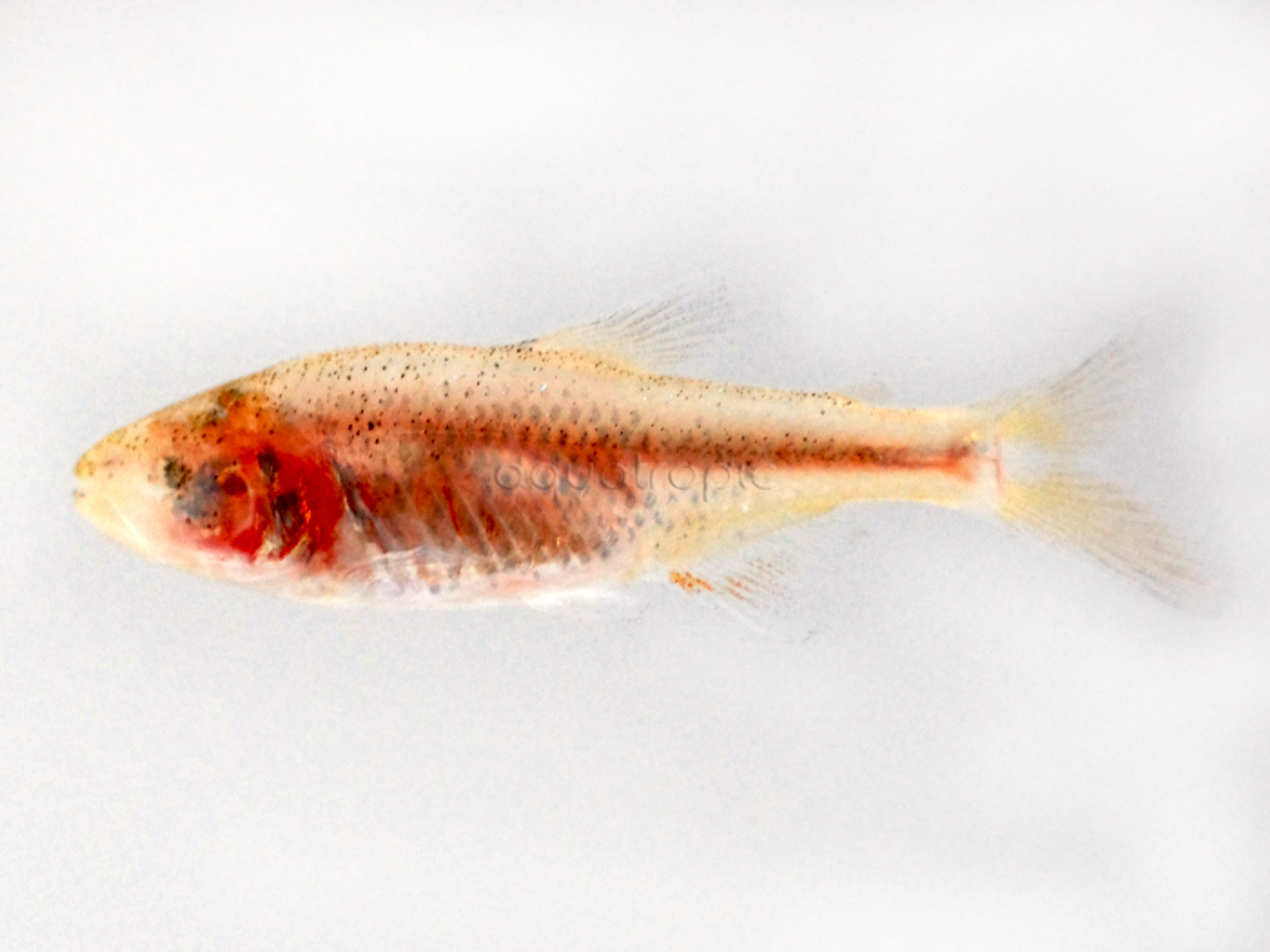Blind Cave Tetra (Astyanax mexicanus)

Caves are famous for the many highly modified species that live their entire lives in perpetual darkness. Many different groups of animals have adapted to this by evolving similar features, such as a loss of pigmentation, reduced or absent eyes, heightened sensory organs and even lowered metabolism and decreased sleep. There are around 170 known species of cave-adapted fishes, some of which are more highly modified than others, but only one of these is commonly available in the aquarium trade, the Blind Cave Tetra.
This pallid fish hails from a few cave systems in northeast Mexico and has been a popular aquarium oddball for decades now. Its widespread availability has to do with its ease of captive reproduction and its popularity with scientists, who have done countless studies to understand how this peculiar piscine lost its eyes and color.
Unlike most other cave fishes, this tetra is not a distinct species. In the surface water around its caves is a rather unimpressive fish known as the Mexican Tetra, which sports a silvery sheen and a pair of eyeballs for seeing. But, at some point in the last few million years, these tetras began to trickle into the many caves connected to their watery habitat, eventually developing the features seen in their blind cavernicolous counterpart. But the two can still freely interbreed, which happens now and then when these surface fishes find their way down into the darkness.
By studying their DNA, scientists have even showed that there is no single “Blind Cave Tetra”, as there have been at least five separate colonizations of this habitat that independently led to the development of these weird cave mutants. Another interesting fact: the Blind Cave Tetra isn’t really blind. There is still some light sensory function from their pineal eye—a small bundle of light-sensitive nerve cells at the top of the head that is separately wired into the brain. This allows them to detect changes in light intensity (like shadows) but is useless for finer details. Also of note, the Blind Cave Tetra is born with eyes, but these degenerate during development.
In the home aquarium, this fish can be treated the same as any other mid-sized tetra. A small group is always recommended for this schooling species, and, having been captive-bred for generations now, it is quite accommodating as far as water parameters and will eat nearly anything that is offered. They are surprisingly active, given that they can’t really see, and will bounce about energetically, especially during feeding time. They have a noted tendency to nip at the fins of their tank mates, especially when food is in the area, so this might not be the best fish to add with anything that might prove vulnerable. Some aquarists have created dark, cave-like biotopes with this fish, but it can just as easily be mixed into a traditional community setup. For a unique fish that is simple to keep, it’s hard to beat the Blind Cave Fish.